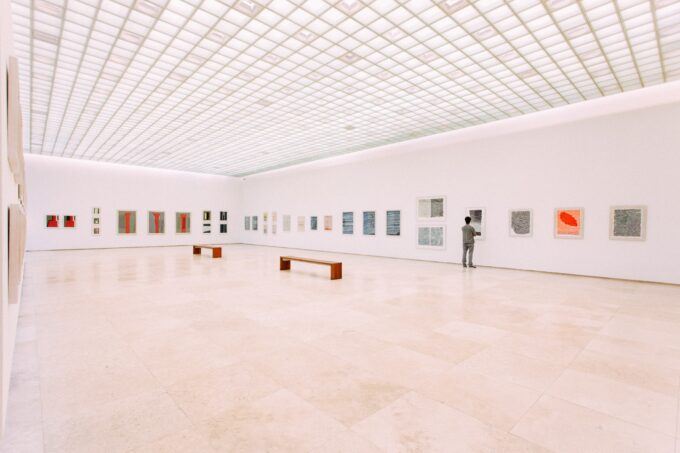Dublin Riots: the Social Engineering of Xenophobia in Ireland

Photograph Source: David Rovics
In these days of a genocidal bombing campaign in Gaza and a widespread blackout in both the mainstream media in the west, and on social media, the choice between a news blackout on Facebook and a polarized, all-or-nothing “discourse” on X, trying to make sense of anything happening in the world that you’re not directly witnessing yourself can in many ways be more challenging than ever, oddly enough, in this epoch of supposed “connection.”
Following events taking place in Dublin, Ireland, since November 23rd, all the same sorts of factors are at play in trying to make real sense of anything, it seems to me. I’m not sure if it’s any different for people who live there, at least judging from the sorts of things we’re hearing from the Irish politicians or Irish media outlets.
So although I know many Irish people in Ireland who share my take on recent history there and ongoing developments in Irish society that have been taking place on the island in our shared lifetimes, perhaps my vantage point as an outsider who is also a frequent visitor with an interest in sociology might be of use.
For the many people out there in the world with Irish ancestry or just anyone with a deep sense of connection with various themes from Irish history or with Irish music, dance, poetry, etc., it’s easy to paint the Irish past and present with broad brushes and unhelpful generalizations. I’ll just admit right here that I’m one of those people apt to make such generalizations, being a history buff with a bit of an obsession with Irish traditional music. But I’ll endeavor to avoid any inaccurate pronouncements, even if I may make a few broad historical statements along the way.
For those who missed it, an Irish citizen with an immigrant background seems to have lost the plot and began attacking small children with a knife, on one of Dublin’s busiest streets. One of the children’s teachers and a quick-thinking Brazilian immigrant on a motorcycle were able to put a stop to the man’s stabbing spree. What then followed were large groups of young men engaging in the torching of city buses and police cars and apparently the chanting of xenophobic slogans (“get them out”), the targeting of a refugee asylum center, it seems, with one of the burning vehicles on fire directly in front of it, and then larger groups of people taking the opportunity created by the chaos to loot some downtown shops.
Politicians and pundits are saying these riots are unprecedented, in a number of ways. They’re very understandably expressing revulsion. But just as often, they seem perplexed.
If they are actually perplexed, and not just faking it for the cameras, it could still be understandable. The politicians are usually around my age or older, unlike these young rioters. The politicians grew up in something more along the lines of the Ireland I first visited in the 1980’s, and then again much more in the 1990’s.
The Irish Republic they grew up in — and the Irish Republic I first visited — was overwhelmingly white, Irish, Catholic, and poor. It was the first country to be colonized by the British Empire, and one of many to throw off the yoke of imperial domination only to replace it with a partial independence that had a lot to be desired, and still does.
But the Ireland they grew up in also had, at least by my recollection, certain consistencies about it that many people found comforting. Most people were poor, but then that was true of most people you knew, and there were very few ostentatiously wealthy people of any description, even in the center of the biggest cities, flaunting their riches and wearing mink coats and staying in fancy hotels back then. Many people were on the dole — probably half the young people I met back when I first visited — but rent was cheap in most of the country, and most everyone could at least squeak by under the circumstances.
Although many people had complaints about the two-party duopoly that had been (and still is) running the Republic of Ireland for most of its existence since independence, there was also a widespread feeling that a lot of people in the world had it worse than Ireland did at the time. There was, and still is, a widespread sense of solidarity with other formerly colonized lands and peoples around the world, whether they were other former victims of the British Empire or victims of other empires. There was a widespread and frequently-expressed revulsion for the racist attitudes many Irish people associated with Irish-Americans, and as an American visiting Ireland I was often told by people that “we’re not like that here.”
To say what is overwhelmingly obvious to anyone my age or older who grew up in Ireland, the whole foundation of Irish nationalism was that it was a nationalism of a colonized nation against an imperial one. And to the extent that most of the island became independent in 1921, Irish nationalism maintained this internationalist, anti-colonial, anti-imperialist, and also fundamentally anti-racist and anti-xenophobic character, as it was rooted in all the colonized people uniting against their common oppressors, and very rooted in socialist notions generally. As any Irish person passingly familiar with Irish history knows, the leaders of the Irish independence struggle were also socialists.
Ireland was thus also not only an island with a disproportionate number of great musicians, but its population on average was one of the most generous in the world, in terms of donating to and volunteering for humanitarian organizations, which is just one quantitative measure of the attitude of the average Irish person.
So many aspects of this Ireland I’m describing began to change in the 1990’s, with the “Celtic Tiger” phenomenon. Overnight, it seemed, Ireland became a country of immigration rather than emigration. Suddenly, jobs were plentiful, but they were being taken not only by Irish people but my immigrants from other EU countries and beyond.
IT companies were moving in in droves and setting up their European headquarters in Ireland. This was good for Irish IT experts, but for everyone else, as in places like San Francisco, it meant skyrocketing rents and other skyrocketing expenses for so many other people.
Ireland was obviously at a crossroads, in the 1990’s, and in a situation where really big decisions desperately needed to be made about regulating the housing market under the circumstances, lest the cost of living become completely disconnected from what the average person earned. Despite efforts to increase social spending to keep up with rising inequality, inequality has continued to rise in Ireland, by my observation and also according to something I just read from the International Monetary Fund. Where this is most apparent is within the ranks of the top 10%, and particularly the top 1%, of Irish society.
As with the US and so many other countries, although perhaps it would be a stretch to call the Irish Republic a failed state, it is a state that, like the US, has been completely unable to rise to the occasion that is demanded by the situation, and effectively control the housing market, which is of course one of the biggest reasons the wealthy keep getting wealthier, and so many other people can’t pay the ever-increasing costs. The average apartment rental in Dublin is now well over $2,000, and getting worse all the time.
And who are the beneficiaries of this growing divide? Some of the biggest are those who own the land — the land, and the buildings, that once were only moderately profitable to own as a landlord, which have become tremendously profitable. Which has led, in Ireland as with the US, to a further concentration in ownership of the housing stock, by investors with ever less connection to the society whose basic needs it is their business to profit from.
This kind of untenable situation might give rise to lots of people identifying their problem as being all caught up with capitalism and things like the housing market being woefully insufficiently regulated. People might demand that all the landlords in the Dáil resign! People might recognize Ireland for the terribly divided class society that it is, now more than ever, and they might try to address this problem head-on.
While there are people trying to organize renters in Ireland, of course, what has characterized the Irish left by my observation over the past two decades or so has been the same sorts of division and atomization that has been easy to witness here in the United States. Identity politics has largely taken over political discourse in the Republic of Ireland, unlike reality on the ground in Northern Ireland, where the same phenomenon has not taken hold to anything like the same degree, though it’s evident there, too.
I don’t know what the various motivations are for the different actors involved here, but what is very evident to observe on social media in the wake of the riots, and generally on social media consumed by Irish people for many years, are people constantly promoting the same kinds of nominally anti-racist arguments that are steeped in a sort of white guilt and anti-working class sentiment very familiar to Americans, but which seems especially alien in the Irish context. Or at least it used to. Now, it seems to have taken root.
After years and years of people in Ireland expressing nationalist sentiments being told by anonymous actors on the internet — some of whom may actually be fellow Irish people, who knows — that their patriotic pride or nationalistic sentiments were nothing more than expressions of racism and xenophobia, that they were uneducated people, that they were scum, eventually this kind of message being driven home continually on corporate, American-owned social media platforms managed to take root. Eventually, some combination perhaps of their ever-more-stressed circumstances, of the unfamiliar displays of ostentatious wealth that are now so easy to find in the center of every Irish city, of the direly precarious and ever-worsening housing market, and of the competition for jobs and housing with an ever-growing population of immigrants and refugees, created the xenophobic outburst that was being socially engineered for so many years, in so many ways.
When I look at the kinds of messaging I’m seeing on social media platforms using hash tags like #DublinRiots I see organized, professional trolls who have an agenda in mind to foment division within Irish society and to foment racism and xenophobia in it. Of course it doesn’t need to be professional to appear to be organized or to have terrible consequences. The right algorithms can create that appearance and have the same effect.
But whether professional actors are involved or not, who might they be and what interests might they be promoting? The possibilities are endless. The ones that first come to mind to me would be anyone who might have an interest in de-socializing Irish nationalism, and turning it into a racist, rightwing phenomenon. Up to this point, Ireland has had no far right party. It is definitely in the interests of various actors, such as MI5, just to take a less-than-random possibility, to divide the Irish nationalist community as much as possible.
It would also be in the interest of the Irish ruling class — the 1% of Irish society that owns a third of the wealth there — which is profiting at a heretofore unprecedented rate from the basic need of the island’s population to have a place to live. Much better to have the nationalists and the refugees competing with each other for a place in Irish society, rather than having them unite against their common class enemy.




